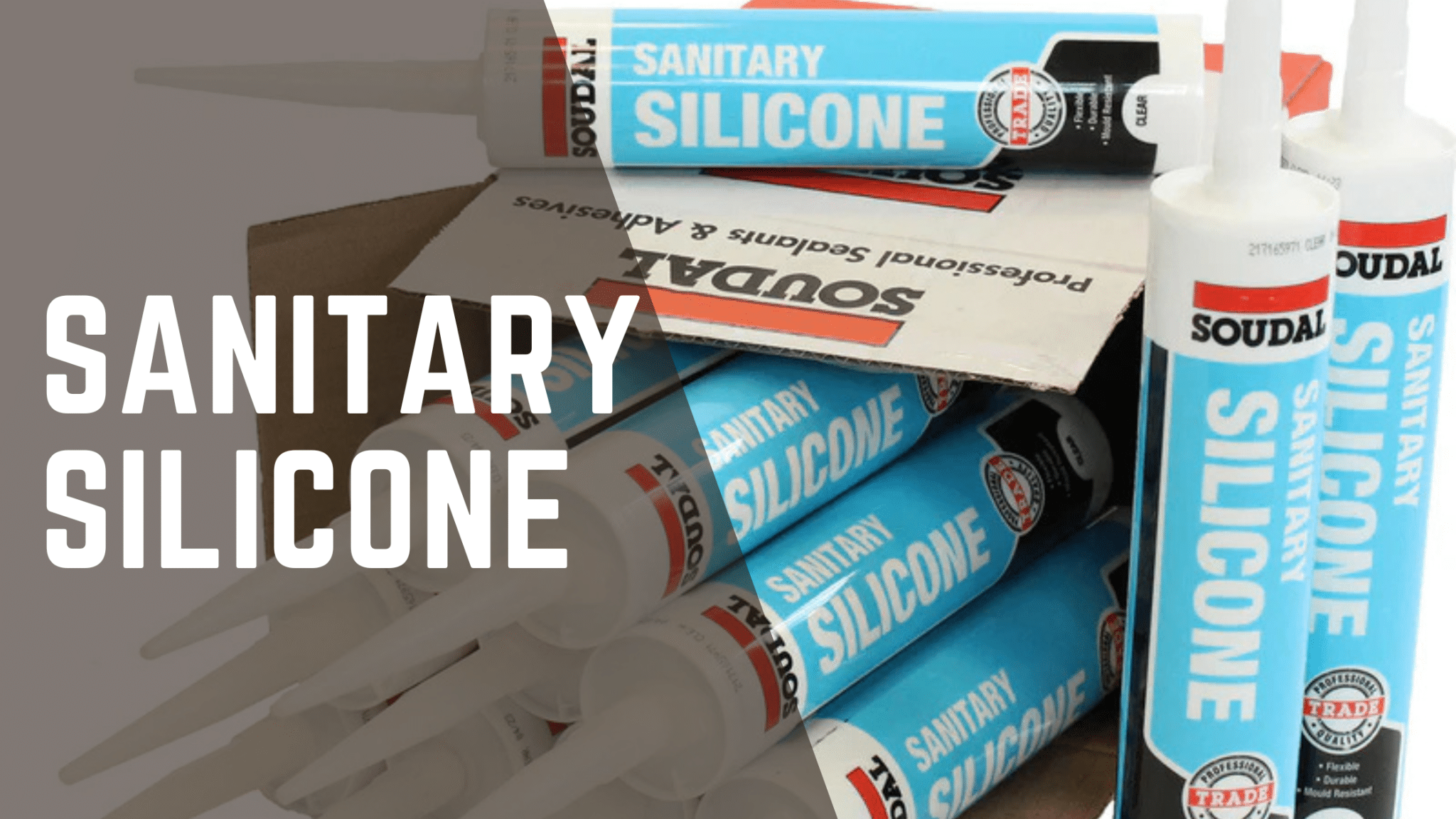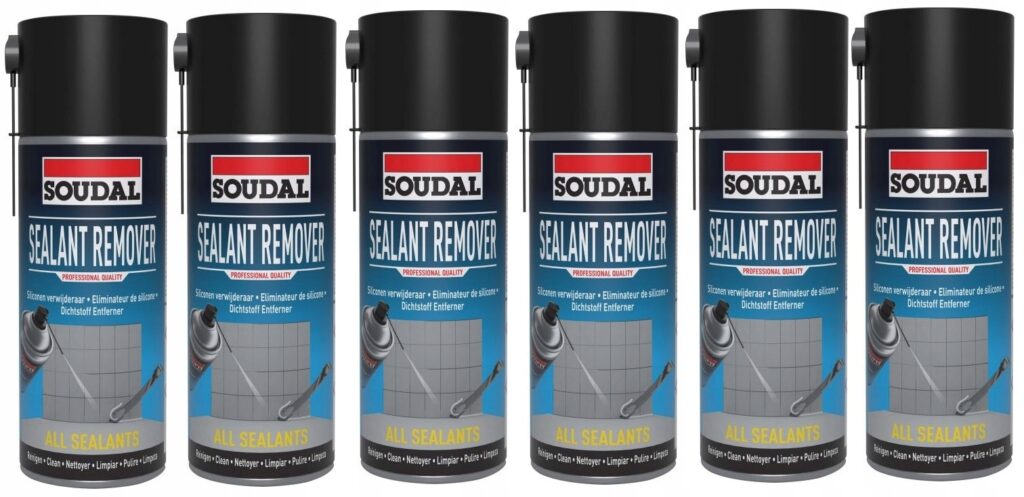There’s a growing need for materials that can withstand the rigours of hygiene-sensitive environments, and sanitary silicones are uniquely designed to meet this requirement. Unlike standard silicones, these specialised compounds are formulated to resist microbial growth, making them ideal for use in healthcare, food processing, and other critical sectors. By understanding what distinguishes sanitary silicones from their conventional counterparts, you can make informed decisions that enhance health and safety in your operations and contribute to a more hygienic environment.
Sanitary Silicones Key Takeaways:
- Antimicrobial Properties: Sanitary silicones are engineered with antimicrobial additives, providing enhanced protection against bacteria, fungi, and mould in hygiene-sensitive environments.
- Resistance to Chemicals: These silicones exhibit superior resistance to harsh cleaning agents and disinfectants, ensuring longevity and durability without degradation.
- Easy to Clean: The smooth, non-porous surface of sanitary silicones allows for effortless cleaning and maintenance, reducing the risk of contamination.
- Low Emission: Sanitary silicones often have low volatile organic compound (VOC) emissions, contributing to better indoor air quality in sensitive areas like hospitals and kitchens.
- Compliant with Regulations: Many sanitary silicones meet stringent health and safety standards, making them suitable for use in medical and food-grade applications.
Chemical Composition of Sanitary Silicones
A deep understanding of the chemical composition of sanitary silicones sets them apart from standard silicones. They are specifically engineered to incorporate enhanced additives that improve their performance in hygiene-sensitive environments. This unique formulation not only ensures durability and flexibility but also promotes cleanliness by inhibiting the growth of harmful microbes.
Base Materials and Additives
By utilising high-quality base materials, sanitary silicones are formulated with specific additives that bolster their antimicrobial properties and resilience. These materials ensure that the product remains effective over time, even in challenging environments.
Antimicrobial Properties
The design of sanitary silicones includes integrated antimicrobial agents, which actively protect against the proliferation of bacteria, fungi, and viruses. This attribute is vital for applications in hospitals, kitchens, and other hygiene-critical settings where contamination poses significant health risks.
Base material selection and the inclusion of antimicrobial agents are what enhance the efficacy of sanitary silicones. These products effectively combat bacteria, such as Escherichia coli and Staphylococcus aureus, reducing the risk of infections and cross-contamination. In scenarios where hygiene is paramount, such as healthcare facilities or food processing areas, the presence of these agents ensures that surfaces remain safer and cleaner, contributing to overall public health.
Physical Properties of Sanitary Silicones
Some of the unique physical properties of sanitary silicones make them ideal for use in hygiene-sensitive environments. These silicones boast exceptional resistance to moisture, chemicals, and bacteria, ensuring they maintain integrity and safety over time. Their smooth finish helps to minimise microbial growth, making them a preferred choice for applications in hospitals, kitchens, and laboratories.
Elasticity and Durability
Among the standout features of sanitary silicones are their impressive elasticity and durability. These materials can withstand significant mechanical stress without compromising their integrity, making them suitable for high-traffic areas. Their flexibility allows for easy application in a range of settings, ensuring a reliable seal that lasts.
Temperature Resistance
Before exploring the applications of sanitary silicones, it’s important to understand their temperature resistance. These materials can endure a wide range of temperatures—typically from -50°C to +200°C—making them suitable for both hot and cold environments. This versatility is vital in settings where temperature fluctuations can impact hygiene standards.
Temperature Resistance Overview
| Temperature Range | Applications |
|---|---|
| -50°C to +200°C | Laboratories, Kitchens, Medical Facilities |
With their exceptional temperature resistance, sanitary silicones significantly enhance your ability to maintain hygiene. They remain stable under heat and cold, preventing degradation that could lead to contamination. This performance makes them necessary in settings where temperature regulation is critical for safety.
Temperature Stability Details
| Stability Feature | Benefits |
|---|---|
| No deformation at extreme temperatures | Consistent performance in varying climates |
| Low thermal conductivity | Prevents heat transfer, safeguarding sensitive areas |
Comparison with Standard Silicones
Unlike standard silicones, which may not adhere to the same stringent hygiene standards, sanitary silicones are specifically engineered to resist microbial growth and contamination. The following table highlights the key differences between the two:
| Property | Sanitary Silicones | Standard Silicones |
|---|---|---|
| Microbial Resistance | Highly resistant | Limited resistance |
| Cleaning Capability | Easy to clean | Variable cleaning difficulty |
| Durability | Long-lasting | Varies widely |
Performance in Hygiene-Sensitive Environments
To ensure optimal hygiene in sensitive environments, sanitary silicones outperform standard silicones by incorporating antimicrobial agents. This unique formulation actively inhibits the growth of pathogens, making them ideal for applications in hospitals, laboratories, and food processing areas, where cleanliness is paramount.
Lifecycle and Longevity
Against standard silicones, sanitary silicones demonstrate superior lifecycle and longevity due to their robust composition. They maintain their properties even in the most demanding conditions, ensuring that your investment lasts longer and requires less frequent replacement.
The longevity of sanitary silicones is particularly significant in high-use areas, where regular maintenance can be labour-intensive and costly. You’ll find that their strong resistance to water, mould, and mildew ensures a durable seal, thus minimising the potential for deterioration over time. This reliable performance not only enhances hygiene but also reduces costs associated with replacement and maintenance in your sensitive environments.
Applications in Healthcare Settings
For those operating in healthcare environments, sanitary silicones offer invaluable properties that enhance hygiene and patient safety. Their antimicrobial qualities significantly reduce the risk of infection, making them ideal for use in hospitals, clinics, and other medical facilities where maintaining a sterile environment is paramount. The resilience and durability of these silicones also ensure that they can withstand regular cleaning and disinfection processes without degradation.
Medical Devices and Equipment
About the use of sanitary silicones in medical devices, these materials play a vital role in preventing the proliferation of harmful bacteria. Their non-toxic nature and ability to repel moisture makes them perfect for components in devices such as prosthetics, catheters, and infusion pumps, where infection control is imperative.
Surfaces and Fixtures
Healthcare facilities across the globe recognise the importance of hygienic surfaces. Sanitary silicones, when applied to surfaces and fixtures, create seamless joints and barriers that limit the accumulation of germs and bacteria. This is particularly relevant in areas exposed to bodily fluids or high traffic, where contamination risk is elevated.
For instance, in surgical theatres and patient rooms, using sanitary silicones for work surfaces, wall seals, and fixtures ensures easy maintenance and effective sanitation. These materials provide a smooth, non-porous finish that not only enhances aesthetic appeal but also contributes to overall cleanliness. The longevity of sanitary silicones means fewer replacements, leading to cost savings for your facility while safeguarding both staff and patient health.
Applications in Food Processing
To ensure the highest standards of hygiene in food processing, sanitary silicones are often employed due to their exceptional properties. These silicones are designed to resist microbial growth and withstand harsh cleaning agents, making them ideal for use in environments where food safety is paramount. Their durability and flexibility allow them to be used in seals, gaskets, and even equipment components, thereby minimising contamination risks while promoting efficient operations.
Compliance with Food Safety Regulations
Along with their performance characteristics, sanitary silicones are specifically formulated to meet stringent food safety regulations. This compliance is crucial in securing customer trust and maintaining the integrity of food products. By choosing materials that adhere to these standards, you effectively reduce the risk of foodborne illnesses and ensure the safety of your processing facilities.
Sanitation and Cleaning Protocols
Beside compliance, it’s imperative that sanitary silicones facilitate effective cleaning and maintenance protocols. Their non-porous nature enhances your ability to eliminate contaminants, thus ensuring a consistent hygiene level throughout your food processing environment.
In fact, when you implement sanitation and cleaning protocols involving sanitary silicones, you will find that their resilience against high-temperature steam and aggressive cleaning agents plays a significant role in maintaining cleanliness. Unlike standard silicones, these materials do not degrade or trap residues, providing you with an easier and more reliable cleaning process. Their easy-to-clean surfaces can help minimise downtime and streamline operations, which is an crucial aspect in food processing where efficiency translates to profitability.
Installation and Maintenance Considerations
Not all silicones are created equal, and adhering to the proper installation techniques for sanitary silicones is crucial. Ensuring a clean, dry surface before application enhances adhesion and longevity. Regular checks for wear and tear are also vital in maintaining integrity, particularly in hygiene-sensitive environments. Always follow manufacturer guidelines for the best results.
Application Techniques
One of the key aspects of effective use of sanitary silicones is ensuring correct application. Use a caulking gun for a smooth, even bead, making sure to apply it in continuous motion to avoid air pockets. It’s crucial to work in a well-ventilated area and to allow proper curing time to maximise performance.
Cleaning and Care Best Practices
Above all, maintaining your sanitary silicone is imperative for optimal hygiene. Regular cleaning with non-abrasive, mild detergents will help prevent mildew and discolouration, ensuring that surfaces remain safe and pleasant.
But consistent care is not just about aesthetics; it’s about safety too. Regularly inspect the silicone for signs of deterioration, such as cracks or discolouration, which may indicate the need for replacement. Ignoring these issues can lead to bacterial growth, compromising the hygiene of your environment. Additionally, always choose cleaning products that are safe for silicone, as harsh chemicals can break down the material and reduce its effectiveness in preventing moisture ingress, leading to potential hygiene risks.
To wrap up
So, when considering sanitary silicones, you recognise the distinct advantages they offer over standard silicones, particularly in hygiene-sensitive environments. Their unique formulation ensures high resistance to microbial growth, along with exceptional durability and flexibility. These properties make them ideal for applications in healthcare, food processing, and other critical sectors. By choosing sanitary silicones, you are prioritising safety and hygiene without compromising on performance, ensuring that your environments remain clean and compliant with rigorous standards.
Sanitary Silicones FAQ
Q: What are sanitary silicones and how do they differ from standard silicones?
A: Sanitary silicones are specialised silicone materials specifically formulated to meet the stringent hygiene requirements of sensitive environments such as hospitals, kitchens, and laboratories. Unlike standard silicones, which may not be designed for antimicrobial properties, sanitary silicones are often treated with additives that enhance their resistance to bacteria, mould, and mildew growth. This makes them particularly suitable for applications where cleanliness is paramount.
Q: What are the key applications of sanitary silicones?
A: Sanitary silicones are widely used in various hygiene-sensitive areas. Common applications include sealants in sanitary ware such as baths, sinks, and toilets, as well as in construction joints where hygiene is critical. They are also used in food processing environments due to their easy-to-clean surfaces and resistance to microbial contamination. Additionally, they are employed in medical devices and equipment to ensure that there is no risk of infection or contamination.
Q: How do sanitary silicones contribute to maintaining hygiene?
A: Sanitary silicones contribute to maintaining hygiene through their inherent properties. They typically have a high level of resistance to water and moisture absorption, which limits the growth of microorganisms. Furthermore, their smooth surface finish makes them easy to clean and maintain, reducing the risk of dirt and bacteria accumulation. Some formulations even possess active antimicrobial agents that provide an additional layer of protection against pathogen proliferation, making them an necessary material in hygiene-sensitive applications.


